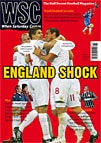 Brian Simpson reports on a disagreement between Oldham Athletic and Failsworth Dynamos, both keen on new footballing homes
Brian Simpson reports on a disagreement between Oldham Athletic and Failsworth Dynamos, both keen on new footballing homes
Failsworth Dynamos, a club familiar with success on and off the pitch, have an ambitious plan to find a permanent home for their 27 teams. When it seemed the local council was about to offer the club the lease on a piece of land ideal for its ambitions, the Broadway site, it looked like an excuse for a party. However, the celebration pint quickly went flat with the news that the land had instead been promised to someone else. The irony is that the third party is not a supermarket chain or rapacious developer, but local professional club Oldham Athletic who want to move from their Boundary Park home.
Dynamos have around 350 players, who, as chairman Leo Turner puts it, are kept “off the streets two nights a week and at weekends”. Turner speaks passionately, both about the club’s aim to provide an opportunity to play football from age five onwards for boys, girls, men and women, and about becoming a Community Club within the FA Charter Standard Scheme. The current pinnacle of their own football pyramid is a team in the Lancashire Amateur League Premier Division, with a longer term objective to incorporate a semi-professional team.
This is the point where their property ambitions become crucial. The Broadway site, on the cusp of Oldham and Manchester, has enough space to meet their needs for matches and training, and gives a chance to move from their current temporary base, a pitch on public open space and a compound of Portakabins, complete with peeling paint. The new home will carry a price tag upwards of £1.5 million. Community Club status will improve their chances of gaining Football Foundation grants as one part of meeting the cost.
For Oldham Athletic, ground development is essential for the club’s survival. Boundary Park costs the club around £450,000 per year to maintain on a turnover of around £3.5m. The current owners, three British businessmen with interests in telecommunications in America, bought the club out of administration in 2003. From the outset they were clear that football-derived revenues would not be sufficient to break even.
The Latics have a track record for innovation, with the plastic pitch of the late 1980s much criticised in the professional game, but widely used as an aspect of the club’s active community programme. Previous club owners saw the need for redevelopment, and the Sports Park 2000 plan exercised the minds of the High Court and the charity commissioners before the club had to bow to vociferous local opposition. More recently, the club fought a two-year planning battle to redevelop Boundary Park. The credit crunch and falling land prices put paid to that plan.
Their new plan is to move the ground to the Broadway site in Failsworth, about four miles from Boundary Park, which will be sold off to fund the move. The ambitious target is to open the new stadium in August 2011. Oldham will still need to gain planning permission and raise funds if their plans are to go ahead.
Leaving Boundary Park, the club’s home for the past century, is seen by many fans as a betrayal of its history, with some drawing on the memory of the local rugby league club that sold its home for housing and has been nomadic ever since. But the main opposition is more territorial. The proposed site may be within the Oldham boundaries – by about 100 metres – but it will have a Manchester postcode.
There is a lazy metaphor that would place Latics and Dynamos in a cup tie with giantkilling potential for the ambitious amateurs. But that, by definition, puts the clubs in opposition and, oddly, they have almost as much in common as they have to divide them. For both clubs the key narratives are ambition and survival, and improving facilities is central to their plans.
The Dynamos need a base from which they can, to quote Turner again, “control their own destiny”. Experience tells them that it might take up to five years to see their ambitions fulfilled. The Latics hope to return to the Championship, but face more pressing issues. Given the costs of maintaining a crumbling stadium and average crowds of just over 5,000, in the medium term the club cannot survive without radical action.
Failsworth Dynamos have understood the realpolitik of taking on the Latics and the council and say they are hopeful of reaching a solution that will suit all. They are in negotiations with the council to secure an alternative site, using what they see as their moral high ground to drive a deal. There is every chance that both clubs will advance their ambitions, but separately: it somehow leaves a feeling that an opportunity for the professional and amateur games to work more closely together has been lost.
From WSC 273 November 2009